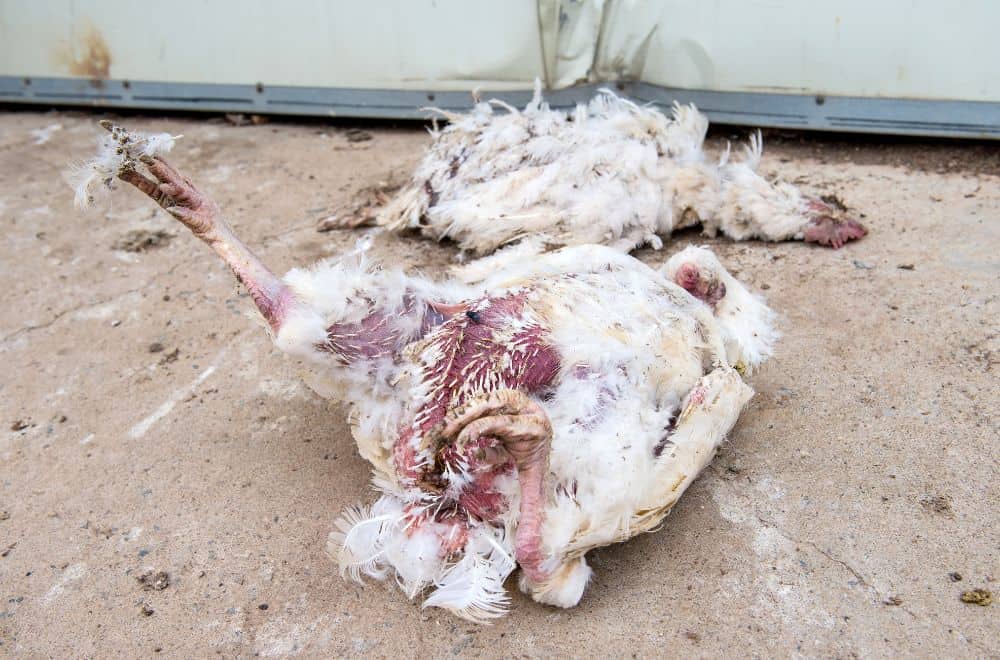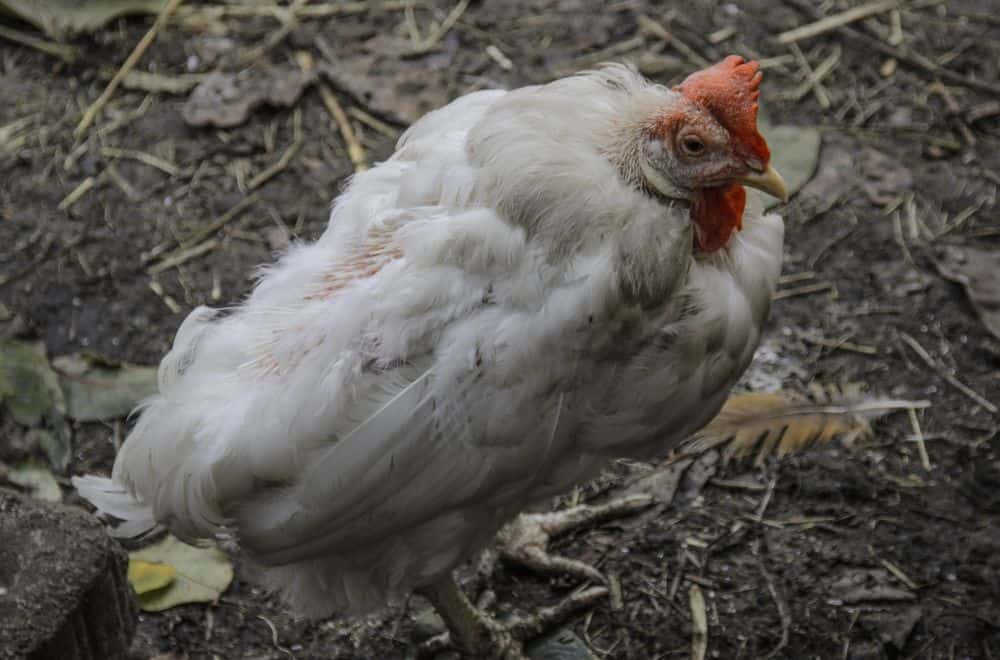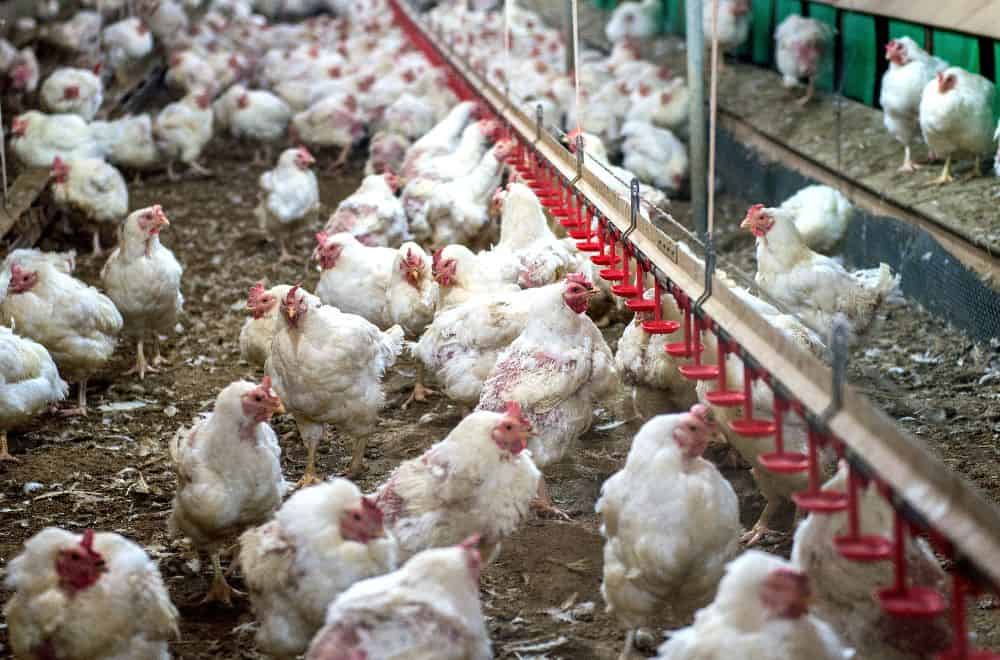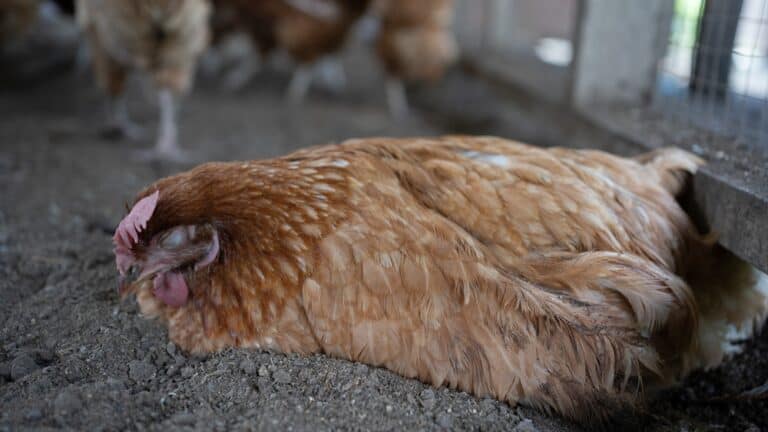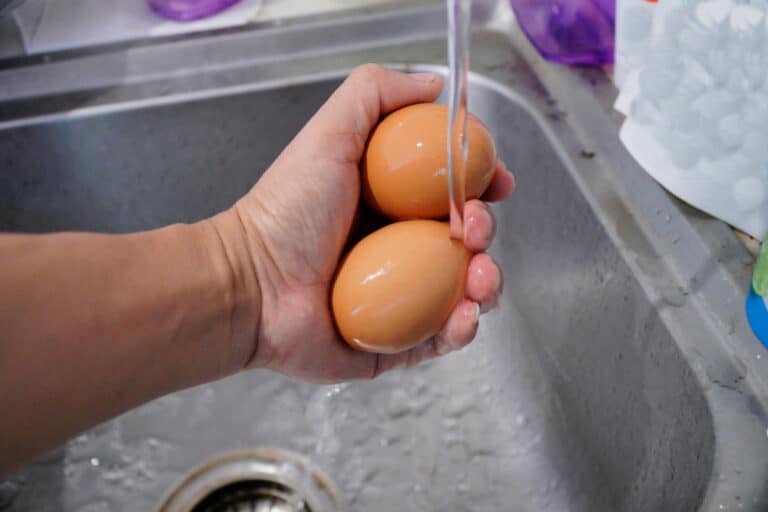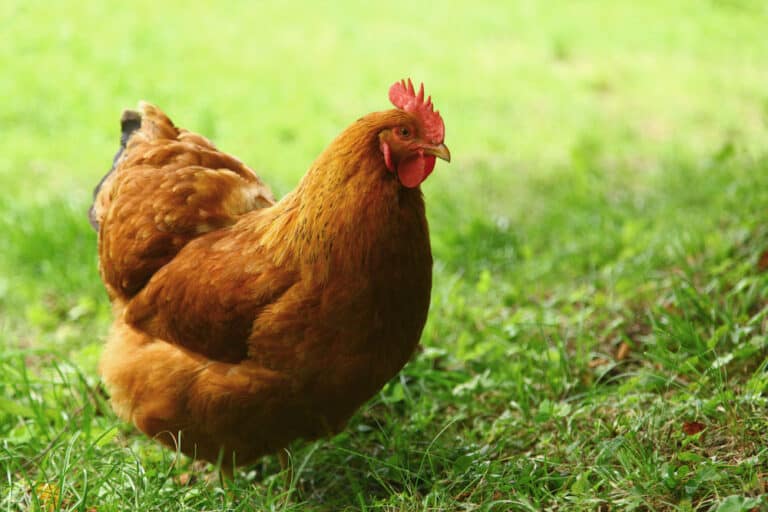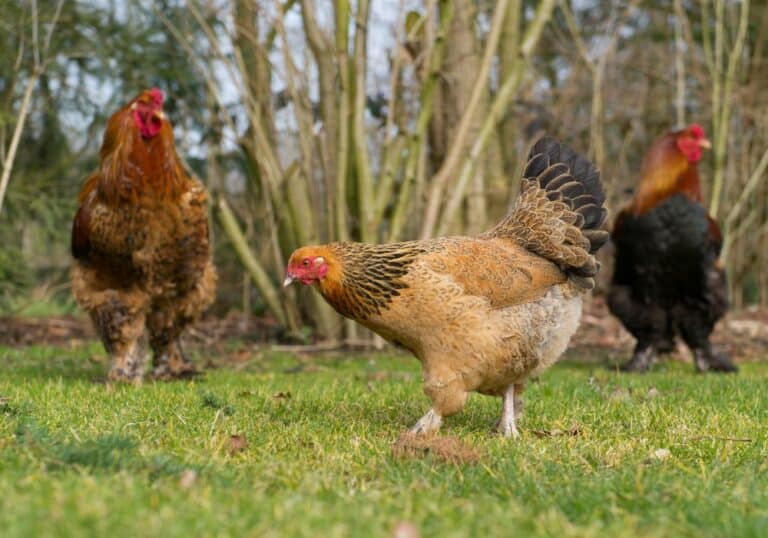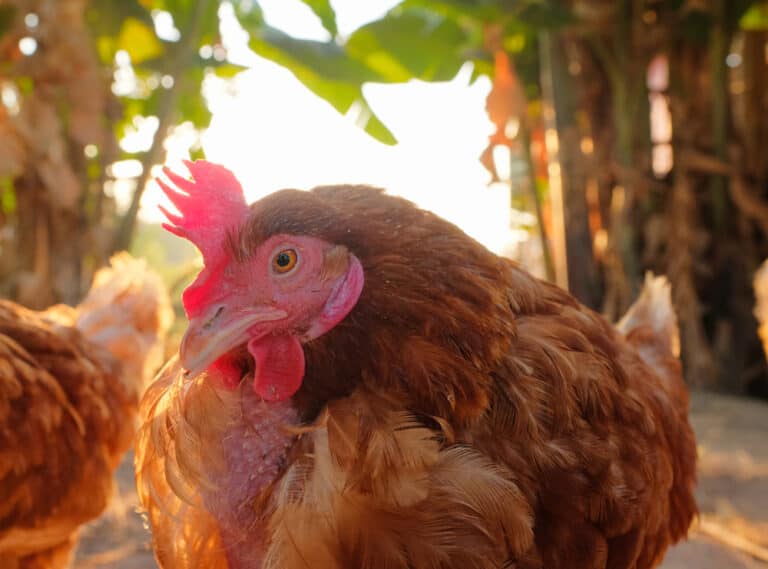Avian influenza (bird flu) is a viral respiratory disease in domestic poultry like chickens, geese, turkeys, ducks, quail, and pheasants. On the other hand, wild waterfowl and shorebirds are hosts and spread the influenza A virus without showing symptoms.
You can recognize two infection types, including LPHI with mild symptoms in poultry and highly deadly HPAI. Therefore, you should be careful once it appears. Always contact your vet and local state agency when suspecting avian influenza in chickens, and remember that prevention is always the best option you have.
Avian Influenza History
Low pathogenic avian influenza was predominant in the past, and the first cases of highly pathogenic avian influenza were officially recorded in 1878. Unfortunately, the virus changed after 1996. Nowadays, new virus strains affecting millions of chickens replaced those with insignificant risk of causing this horrible disease.
Official data show that the infection typically affects outdoor-reared poultry after contact with migratory shorebirds and waterfowl. It is rarer in commercial poultry kept indoors, but it seems that there are no rules.
For instance, there was a fear that wild birds flying from Siberia to Alaska may transmit the Asian form of infection to the US during outbreaks in Southeast Asia from 2004 to 2006. However, it didn’t happen.
The most disastrous HPAI outbreaks appeared in North America ten years later, between 2014 and 2015. In that period, the infection caused the death of about 50 million chickens, pheasants, and turkeys.
The disease started on the West Coast in 2014. Besides one commercial chicken flock and a pheasant farm with over 5,000 birds, the disease mostly appeared in small farms with backyard poultry.
Once HPAI appeared in the Midwest in 2015, the infection changed the pattern, and only six backyard flocks were affected. The rest 180 farms were commercial, followed by huge losses.
The last outbreak appeared in Midwest and East Coast backyard poultry flocks in 2022. The consequences of heavy poultry losses and reduced egg production are still being felt.
What is Avian Influenza?
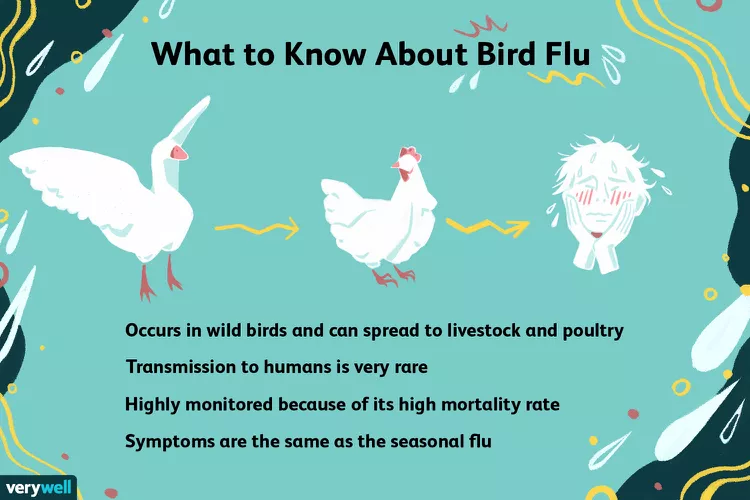
Avian influenza is a viral infection isolated in over a hundred different wild bird species worldwide. You can recognize asymptomatic carriers, like:
Wild waterfowl (wild aquatic birds)
- Wild geese
- Mallards
- Terns
- Gulls
- Swans
Shorebirds
- Storks
- Sandpipers
- Plovers
These wild birds carry the virus as hosts and transmit the disease to domestic poultry, causing severe symptoms. The most susceptible species to the avian influenza virus are:
- Chickens
- Ducks
- Geese
- Turkeys
- Pheasants
- Quails
Wild waterfowl, particularly Puddle ducks (Dabbling ducks), are hosts and reservoirs for this virus type. Even though they carry it in their respiratory tract and intestines, they almost never get sick.
Unfortunately, these birds infect domestic poultry, causing more or less pronounced symptoms. There are three ways of spreading bird flu from wild birds to domestic fowl:
- By direct contact
- By indirect contact after exposure to feathers, feces, and carcasses
- Through infected coop, equipment, water, and food
You can recognize two disease types, including:
- LPAI (low pathogenic avian influenza)
- HPAI (highly pathogenic avian influenza)
A virus with low pathogenicity causes subclinical respiratory disease followed by reduced egg production. Sometimes, farmers face severe systemic disease in their poultry when a highly pathogenic virus affects all their organs. Since there is no appropriate therapy and vaccines, the mortality level is exceptionally high.
Symptoms
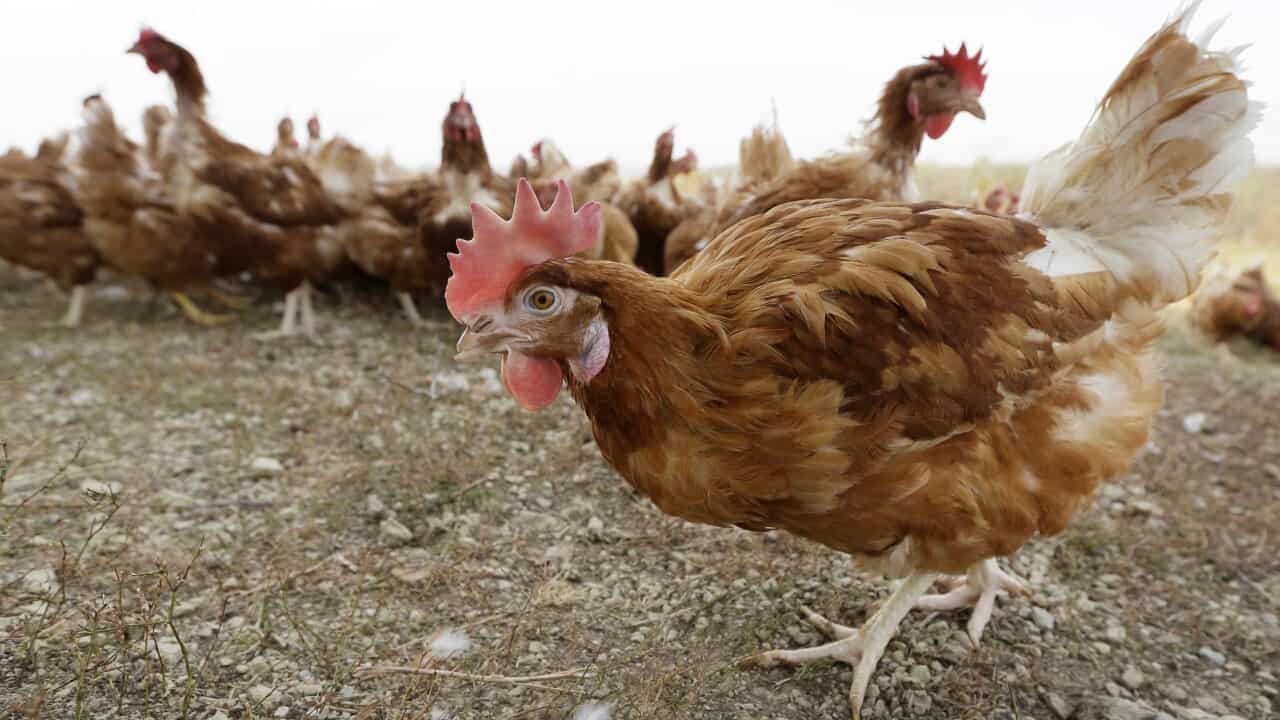
Depending on the virus’s pathogenicity level, you can expect two significantly different clinical pictures. For instance, LPAI is often followed by mild respiratory symptoms, such as:
- Infraorbital sinuses swelling
- Coughing
- Sneezing
- Discharge from eyes and noses
- Trachea and lung inflammation
- Ruffled feathers
- Decreased egg production
Without additional secondary bacterial infections, the mortality level is low. Unfortunately, this type can quickly spread and turn into HPAI. Once systemic disease appears and the virus starts affecting internal organs, symptoms become severe, including:
- Head cyanosis and swelling, particularly around the closed eyes
- Gasping, mouth breathing, coughing, and sneezing
- Blood-tinged discharge from mouths and noses
- Neck twisting
- Body shaking and paralyzed wings
- Ruffled and puffed feathers
- Dry, blue-purple, and swelling wattles and combs in chickens and snoods in turkeys
- Hemorrhages under the neck skin
- Shanks’ and feet’s red discoloration and edema
- Lethargy and reduced moving
- Pedaling while lying down
- Lack of appetite and lower water intake
- Extreme diarrhea (loose, watery droppings)
- Fever
- Significant reduction in egg production
- Lack of coordination and tremors
- Sudden death
Both variations rapidly spread through flocks, causing significant losses. The HPAI avian influenza is particularly dangerous and causes death within 48 hours. The mortality rate is incredibly high, typically between 90% and 100%.
Severe human infections are uncommon but are also possible. Reasons for bird flu in humans are direct contact with infected poultry, their products, feathers, and carcasses.
Avian Influenza Diagnosis
Be aware that noticing symptoms typical of avian influence is not enough to diagnose the infection beyond any doubt. It is necessary to:
- Isolate viral RNA from cloacal or oropharyngeal swabs
- Isolate the HPAI virus from internal organs
- Detect specific antibodies through serologic testing
Differential diagnosis
When you suspect LPAI, it is crucial to differentiate it from other respiratory diseases, such as:
- Acute infectious laryngotracheitis and bronchitis
- Newcastle disease
- Mycoplasmosis
- Turkey coryza
- Infectious coryza
- Fowl cholera
- Ornithobacteriosis
- Aspergillosis
The differential diagnosis for HPAI includes the following infections:
- Fowl cholera (per-acute septicemic form)
- Virulent Newcastle disease
- Severe water deprivation
- Heat exhaustion
Treatment
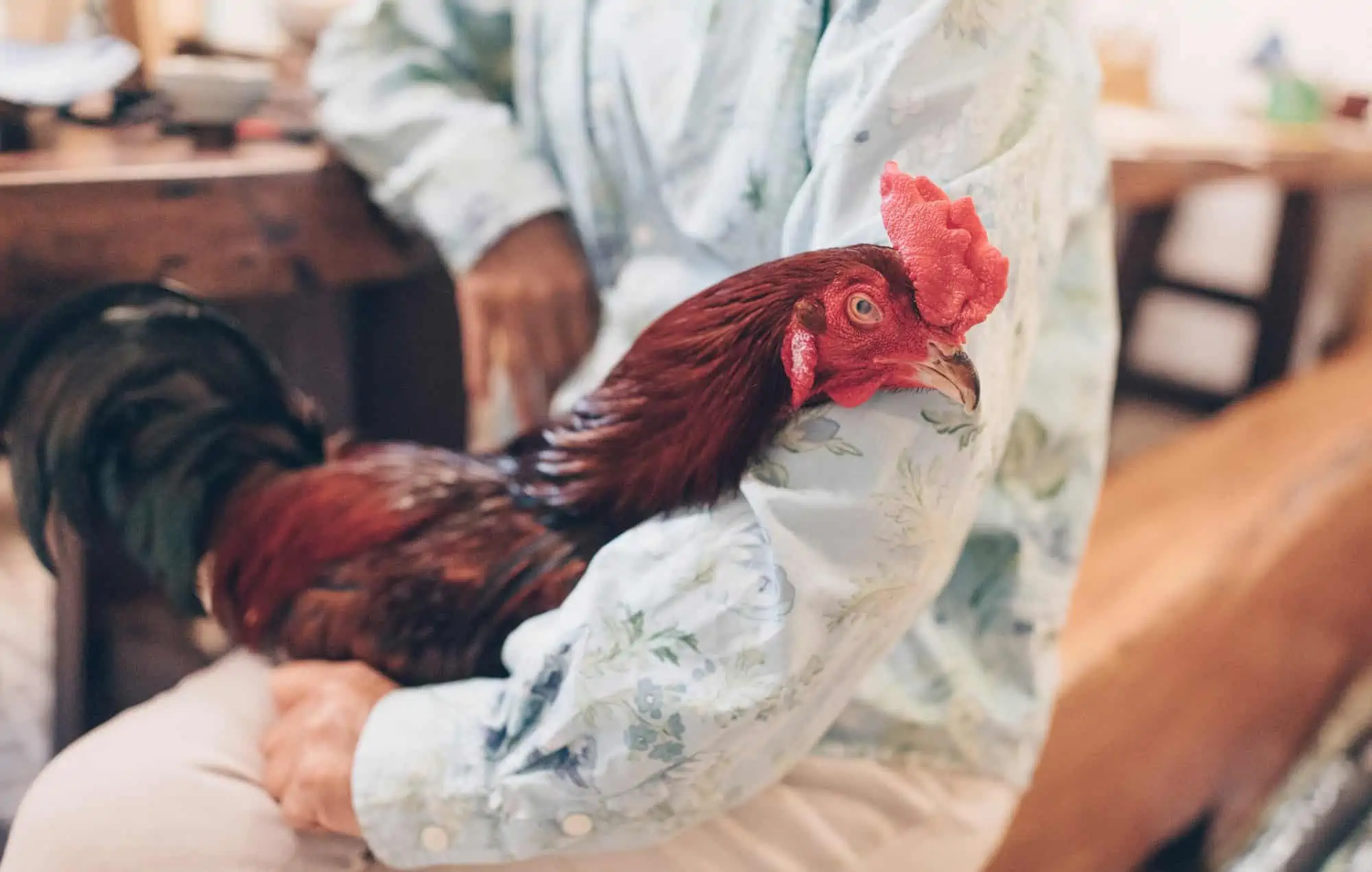
There is no way to treat HPAI. Therefore, most countries regulate the problem by eliminating the entire flock.
Once you find the sick bird, you are legally responsible for notifying your vet and local authorities. They will surely ask you about the place where you found it, the options for safe carcass removal, and your poultry health.
What to do after an avian Influenza outbreak on a farm?
- Immediate quarantine establishment
- Quick euthanasia of affected flock
- Postponement of tools and equipment used in the infected area to an isolated place
- Disinfecting the farm where the infected flock was housed
- Monitoring a potential new focus of infection in the area
- Testing and monitoring birds for avian influenza
- Final testing of the farm after 21 days and bringing new poultry when the last result is negative for bird flu
Remember that all HPAI-infected flocks need to be destroyed. Their products are forbidden for use and mustn’t enter the food chain.
Supportive care
In some countries, treating LPAI-affected poultry with broad-spectrum antibiotics is allowed. That way, it is possible to prevent secondary bacterial infection, but treating the flock with antiviral drugs is forbidden.
Prevention
Since HPAI is an incurable disease, following basic prevention guidelines is the only way to protect your household.
Ways to keep your family safe from avian influenza
Your primary task is to protect members of your family, particularly kids, from this severe infection. Therefore, it is crucial to take a few steps to stay healthy, including:
- Regularly wash hands after handling poultry and eggs
- Cook eggs and meat before consuming
- Never bring chickens inside the house
- Wear a mask when manipulating sick birds and cleaning their droppings
Ways to protect backyard chickens from avian influenza
The only way to protect your family is to save your poultry healthily and protect it from potential disease. It is vital to:
- Avoid attracting wild birds because they often carry viruses
- Build an enclosed shelter for your poultry
- Fence your yard
- Clean up feed spills after feeding poultry
- Regularly clean feeders and waterers
- Eliminate standing water to prevent attracting migratory birds
- Keep feed packages and water in safe and hard-to-reach places for wild birds
- Keep a coop and equipment clean
- Never share equipment with other poultry owners
- Be careful when taking birds to shows and markets
- Organize quarantine for new poultry
Ways to prevent avian influenza on the farm
In the case of an avian influence outbreak in the area, every farmer and poultry breeder need to follow the recommended steps, such as:
- Place a functioning footbath at the entrances
- Limit foot traffic and minimize visitors on the farm
- Personnel and possible visitors must wear new coveralls and disinfected footwear
- Cover feed and water sources
- Forbid farm equipment sharing
- Carry out disinfection and pest control in all buildings
- Clean and disinfect the vehicle exterior before entering the farm
- Prevent contact with domestic and wild birds
- Handle, pack, and store eggs in a biosecure way
- Keep precise egg production records
- Hold waste and dead birds in biosecure facilities entirely separate from healthy poultry
- Dispose of poultry manure in the prescribed manner
Vaccinations
Producing vaccines is pretty complicated since the virus mutates by the moment when they become commercially available.
Therefore, poultry vaccination against avian influenza is not a routine disease control measure in the UK and the US. However, the US Agriculture Department is considering vaccinating chickens to protect them from this lethal infection.
Summary
Bird flu is a domestic fowl viral infection with a high death rate. There is neither adequate treatment for this disease nor mandatory vaccination due to fast virus mutation. Wild birds are asymptomatic carriers, so you should find a way to keep them away from your poultry.

